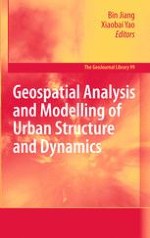2010 | OriginalPaper | Chapter
5. Network Cities: A Complexity-Network Approach to Urban Dynamics and Development
Authors : Efrat Blumenfeld-Lieberthal, Juval Portugali
Published in: Geospatial Analysis and Modelling of Urban Structure and Dynamics
Publisher: Springer Netherlands
Activate our intelligent search to find suitable subject content or patents.
Select sections of text to find matching patents with Artificial Intelligence. powered by
Select sections of text to find additional relevant content using AI-assisted search. powered by
